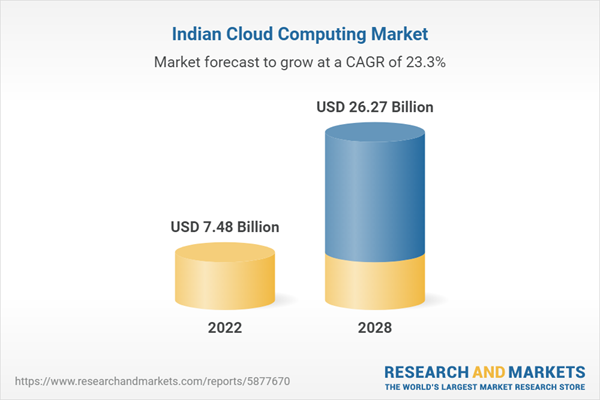Speak directly to the analyst to clarify any post sales queries you may have.
10% Free customizationThis report comes with 10% free customization, enabling you to add data that meets your specific business needs.
Increased use of Big Data, AI, machine learning, and other technologies to drive the market
The growing use of machine learning and artificial intelligence is likely to propel the cloud computing business forward. Cloud computing offers traditional businesses solutions such as cloud computing, big data & analytics, data management, and other advanced features such as artificial intelligence and machine learning that help optimise business operations, resulting in lower operational costs and increased efficiency. As a result, its application has risen in a variety of industries, including healthcare, finance, transportation, manufacturing, and others, driving the growth of the cloud computing industry.To remain competitive in today's high-tech digital environment, organizations must continually innovate and pilot new technologies in the cloud computing, as well as listen to customers and the market for signs of change. Marketing is no exception to the general business landscape's fast trend toward automated procedures and data-driven decision making in the cloud market. Thus, rapid expansion is driving the India Cloud Computing Market.
India Cloud Computing Market Challenges
Cloud computing is used by users to keep sensitive data about their company and personal activities on cloud-based systems. However, data security and privacy worries about data loss, breaches, unplanned crises, application vulnerabilities, and internet cyber-attacks are expected to stymie cloud computing's growth. While cloud services help organizations increase productivity and decrease expenses, data stored in the cloud is vulnerable to assaults. Cloud malware injection, meltdowns, account or service hijacking, and man-in-the-cloud attacks disclose enterprise data vulnerabilities, which can lead to business shutdown and losses. Cyber-attacks, on the other hand, impair business operations, restricting the expansion of the cloud computing market.Market Segments
The India Cloud Computing Market is segmented on the basis of service organization type application, by end-user (IT & Telecom, BFSI, retail & consumer goods, healthcare and others). Based on service, the market is further divided into SaaS, IaaS, PaaS and BPaaS. Based on organization type, the market is divided into government, small and medium sized enterprises and large enterprises. Based on application, the market is divided into app hosting, e-mail, storage & backup, CRM, business analytics, database & content management and others. Based on end-user, the market is divided into IT & telecom, BFSI, retail & consumer goods, healthcare and others.Market Players
Major market players in the India Cloud Computing Market are Tata Consultancy Services, Infosys Limited, Alphabet Inc, Zenith InfoTech Limited, CipherCloud, CtrlS Datacenters Limited, Amazon Web Services, Clogeny Technologies Private Limited and, Microsoft Azure. To achieve good market growth, businesses that are active in the market employ organic tactics such as product launches, mergers, and partnerships.Report Scope
In this report, India Cloud Computing Market has been segmented into following categories, in addition to the industry trends which have also been detailed below:India Cloud Computing Market, by Service:
- SaaS
- IaaS
- PaaS
- BPaaS
India Cloud Computing Market, by Organization Type:
- Government
- Small and Medium-sized Enterprises
- Large Enterprises
India Cloud Computing Market, by Applications:
- App Hosting
- Storage & Backup
- CRM
- Business Analytics
- Database & Content Management
- Others
India Cloud Computing Market, by End User:
- IT & Telecom
- BFSI
- Retail & Consumer Goods
- Healthcare
- Others
India Cloud Computing Market, by Region:
- East India
- West India
- North India
- South India
Competitive Landscape
Company Profiles: Detailed analysis of the major companies present in India Cloud Computing Market,Available Customizations
The following customization options are available for the report:- Detailed analysis and profiling of additional market players (up to five).
This product will be delivered within 1-3 business days.
Table of Contents
Companies Mentioned
- Tata Consultancy Services
- Infosys Limited.
- Wipro Limited
- Zenith InfoTech Limited
- CipherCloud
- Amazon Web Services
- Ctrls Datacenters Limited
- Clogeny Technologies Private Limited
- Alphabet Inc.
- Microsoft Azure
Table Information
| Report Attribute | Details |
|---|---|
| No. of Pages | 90 |
| Published | September 2023 |
| Forecast Period | 2022 - 2028 |
| Estimated Market Value ( USD | $ 7.48 Billion |
| Forecasted Market Value ( USD | $ 26.27 Billion |
| Compound Annual Growth Rate | 23.2% |
| Regions Covered | India |
| No. of Companies Mentioned | 10 |









